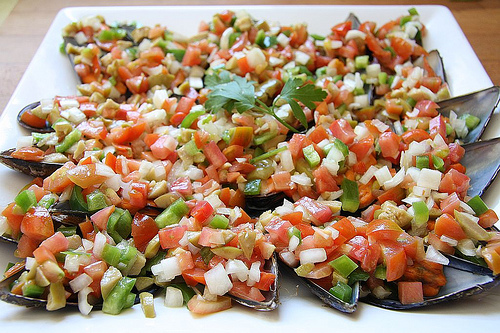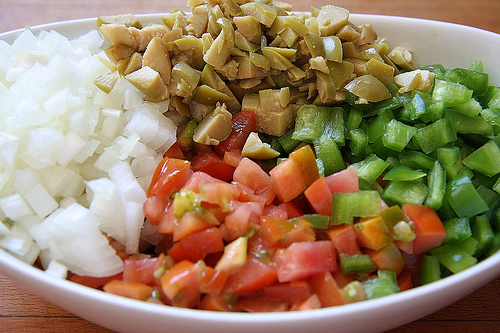
Origin: Andalusia

In any Malaga guide, you'll learn more about Pipirrana, a typical Spanish salad from the city and Jaen in Andalusia, who dispute over the creation of the dish. However there are many other regions such as Murcia that have their own variations. Pipirrana is a great example of a dish that was created through necessity and has now become a dish enjoyed by all for all manner of purposes.
Spanish cuisine uses many common elements, which are healthy and very common. Tomatoes and olive oil are a essential elements of the Spanish diet which are included in the pipirrana recipe.
Pipirrana is a refreshing and nutritious salad, very tasty and easy and quick to prepare. Many examples of Spanish food don't have an exact method or ingredients, as they developed over time and many evolved throughout the years. As popular dishes, families made them with whatever elements they had available, either due to their economy or seasons. Pipirrana is one of them, as basically is a typical salad made to use all vegetables that are left in the fridge.
Salads and cold foods are very typically associated with the Spanish region of Andalusia in the South of the country. A key element to understand why these originated in that region is the weather. In the zenith of the Spanish summer, temperatures can reach up to 113º F in some areas of the South of Spain and the main activity in this autonomous community is agriculture, which means working long and hard hours under the sun, and soups like gazpacho, contain a high density of water, so as well as nourishing they hydrate as well.
Some of pipirrana's most common variations are consumed in Jaen, where the tomatoes are peeled, emulsified with lots of oil, tuna, green pepper and garlic and is used to soak pieces of bread, so it's halfway between a salad and gazpacho. However, it is also commonly eaten in Granada and Murcia too. Throughout the country there are a number of variations too. In another area of Andalusia "pipirrana rin-ran" is prepared, a variant where all the ingredients are mashed in order to make a thick puree spiced with cumin. In the southern province of Ciudad Real it is often made with cooked tomato, olives, egg, tuna, onion, salt with some olive oil. Meanwhile in parts of the city on Cuenca, the pipirrana is much more like a stew and includes a variety of different ingredients including mushrooms, pork, poultry, dried yomatoes and olive.
As you can see, the varieties of the dish change the ingredients mostly and this is because the ingredients and vegetables to be found in different parts of the country vary significantly. This means that the dish is very flexible and so you should feel free to adapt it however you like!
If you are looking for a more traditional version of the recipe for pipirrana however, why not check out our recipe below. This is a simple recipe perfect for every occasion. It makes a great side salad, as well as a good starter. Remember, you can always replace the tuna with another vegetable if you are planning on serving this Spanish dish to some vegetarian friends.

Ingredients (four portions):
Preparation:
If you ever decide to go to Malaga, be sure to ask the locals where the best pipirrana salad is served and go and try it. It is the perfect salad to eat on a hot Spanish summer's day.